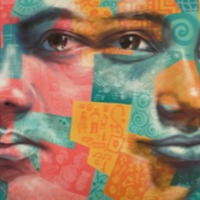
Brooke Axtell
There are an estimated 403,000 people living in modern slavery in the United States (GSI 2018). Sex trafficking exists throughout the country. Traffickers use violence, threats, lies, debt bondage and other forms of coercion to compel adults and children to engage in commercial sex acts against their will. The situations that sex trafficking victims face vary, many victims become romantically involved with someone who then forces them into prostitution. Others are lured with false promises of a job, and some are forced to sell sex by members of their own families. Victims of sex trafficking include both foreign nationals and US citizens, with women making up the majority of those trafficked for the purposes of commercial sexual exploitation. In 2015, the most reported venues/industries for sex trafficking included commercial-front brothels, hotel/motel-based trafficking, online advertisements with unknown locations, residential brothels, and street-based sex trafficking. Brooke Axtell was seven years old when she was trafficked for sex by her nanny. Her mother was in hospital and her father travelled for work. She was taken to houses and hotels and sold to strange men. She was forced into pornography with adults and other children. The trafficking finally ended when her mum came out of hospital and fired the nanny, but Brooke’s trauma followed her into adulthood.
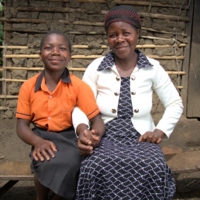
Loyia
There is an estimated 304,000 people living in modern slavery in Uganda (GSI 2018). Under the Children Act (2016), the minimum legal age of marriage in Uganda is 18 years old with no exceptions. However, there are challenges with enforcing the ban as child marriage is not defined within the penal code, and perpetrators often do not face justice unless there are signs of serious violent assault. Growing up in rural Uganda, Loyia went to school for just three years as her parents could not afford her education and at 15-years-old she was forced to marry.
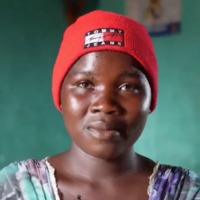
Habiba
There are an estimated 157,000 people living in modern slavery in Cameroon. Child traffickers often use the promise of education or a better life in the city to convince rural parents to give their children over to an intermediary, who then exploits the children in sex trafficking or forced labour. Sometimes relatives subject children to sex trafficking within the country. In Cameroon, one in every three girls is married before the age of 18. After Habiba’s father died, her mother struggled to support the family. At 14, she was forced into marriage with a stranger who would beat her and abandoned her after the birth of her twins, one of which died shortly after.
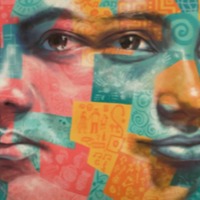
Angelica
There are an estimated 4,000 people living in modern slavery in Qatar (GSI 2018). Qatar is a destination country for men and women subjected to forced labour and, to a much lesser extent, forced prostitution. Men and women from Nepal, India, Pakistan, Bangladesh, the Philippines, Indonesia, Sri Lanka, Sudan, Kenya, Nigeria, Uganda, and other countries voluntarily migrate to Qatar as unskilled laborers and domestic workers, often paying illegal and exorbitant fees to unscrupulous recruiters in the labour-sending countries, thereby increasing their vulnerability to debt bondage. Some workers subsequently face conditions indicative of involuntary servitude, to include restricted movement, payment withholding, passport confiscation, exit permit retention, and threats of deportation or abuse. Individuals in Qatar sell visas to migrants and occasionally demand regular payments, enabling migrant workers to work illegally and without legal recourse against their respective sponsors, although reportedly this trend is on the decline. ‘Angelica’ was 49 years old when she travelled outside of the Philippines for the first time in 2011. She was married and had three children. Her employers were a married couple. They would often fight, Angelica said, and the husband would throw things at his wife. She was paid every month and would send the money home to her family. For the first month she was paid 730 riyals [US$200] and then 750 riyals [US$205] every month after that. The contract she had signed promised that she would earn US$400 per month.
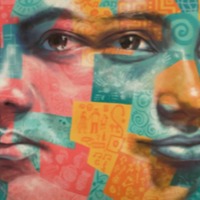
Ramita T.
There are an estimated 171,000 people living in modern slavery in Nepal. Within Nepal, bonded labour exists in agriculture, brick kilns, the stone-breaking industry, and domestic work. Sex trafficking of Nepali women and girls increasingly takes place in private apartments, rented rooms, guest houses, and restaurants. Nepali and Indian children are subjected to forced labor in the country, especially in domestic work, brick kilns, and the embroidered textile, or zari, industry. Under false promises of education and work opportunities, Nepali parents give their children to brokers who instead take them to frequently unregistered children’s homes in urban locations, where they are forced to pretend to be orphans to garner donations from tourists and volunteers; some of the children are also forced to beg on the street. According to Human Rights Watch, thirty-seven percent of girls in Nepal marry before age 18 and 10 percent are married by age 15, in spite of the fact that the minimum age of marriage under Nepali law is 20 years of age. UNICEF data indicates that Nepal has the third highest rate of child marriage in Asia, after Bangladesh and India. Ramita T. married at age 12 to escape an abusive home environment.
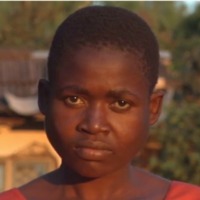
Elina
There an estimated 131,000 people living in modern slavery in Malawi (GSI 2018). According to Girls Not Brides, one out of every two girls in Malawi will be married by her eighteenth birthday.Elina was forced to marry at 15 years old.
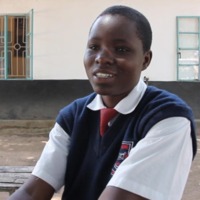
Peres
There are an estimated 328,000 people living in conditions of slavery in Kenya (GSI 2018). Men, women and children are subjected to exploitation amounting to modern slavery in forced labour and sex trafficking. Children are often subjected to forced labour in domestic service, agriculture, fishing, cattle herding, street vending and begging. They are also victims of commercial sexual exploitation throughout the country, in khat cultivation areas, near gold mines and along the highway and Lake Victoria. Moreover, those residing in Kenya's largest refugee camp Dadaab are often vulnerable. Men and women are often lured by employment agencies offering attractive job opportunities, then find themselves trapped in domestic servitude, massage parlors and brothels or forced manual labour.Peres was forced in to child marriage in Kenya.
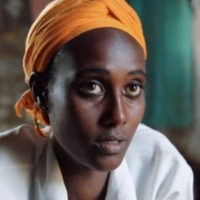
Melka
There are an estimated 614,000 people living in modern slavery in Ethiopia. Girls from Ethiopia’s impoverished rural areas are exploited in domestic servitude and commercial sex within the country, while boys are subjected to forced labour in traditional weaving, construction, agriculture, and street vending. Addis Ababa’s central market is the site of numerous brothels, where some young girls are exploited in commercial sex. Ethiopian girls are exploited in domestic servitude and commercial sex in neighbouring African countries, particularly Djibouti and Sudan. According to a 2017 report by UNICEF, 40% of girls are married by the time they turn 18. They found that Ethiopia has the 15th highest prevalence rate of child marriage in the world and the fifth highest absolute number of child brides – 2,104,000.Melka was forced to marry a man she did not know when she was 14 years old. Within the marriage she was subjected to physical violence.

Layla
There are an estimated 25,000 people living in modern slavery in Tunisia (GSI 2018). In 2017, the government observed an increase in child victims of sexual violence and exploitation, some of whom are victims of trafficking. According to a baseline study published in 2013, conducted by the Tunisian government and an international organization, Tunisian youth are subjected to various forms of trafficking. According to the study and as reported by other experts since 2016, some Tunisian girls work as domestic servants for wealthy families in Tunis and major coastal cities; they are highly vulnerable to trafficking, experiencing restrictions on movement, physical and psychological violence, and sexual abuse. Tunisian women have reportedly been forced into prostitution under false promises of work both within the country and elsewhere in the region, such as Lebanon, United Arab Emirates, and Jordan.After Layla's father lost his job, she was forced to marry at the age of 15. A woman told Layla she could help her escape the physical and sexual abuse she was facing in her marriage. However instead she forced Layla into commercial sexual exploitation. After 4 years, Layla was able to escape to Syria.
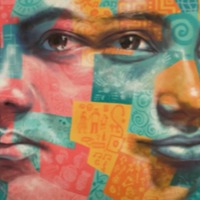
Aaliyah
There are an estimated 518,000 people living in modern slavery in Egypt. As reported over the past five years, Egypt is a source, transit, and destination country for men, women, and children subjected to forced labour and sex trafficking. Egyptian children are vulnerable to sex trafficking and forced labour in domestic service, street begging, and agricultural work. Aaliyah was 14 when she was forced to marry a 26-year-old man.

Juana
There are an estimated 403,000 people living in conditions of modern slavery in the United States (GSI 2018). The US attracts migrants and refugees who are particularly at risk of vulnerability to human trafficking. Trafficking victims often responding to fraudulent offers of employment in the US migrate willingly and are subsequently subjected to conditions of involuntary servitude in industries such as forced labour and commercial sexual exploitation. Juana first travelled from the Philippines to Kuwait in 1985 where she was subjected to domestic slavery. Locked in her employer’s house and unable to communicate with her family. From here, Juana’s ex-husband’s sister helped her leave Kuwait and travel to the United States. Here she became a domestic worker where she suffered withholding of pay and unfair dismissal. With the help of a local grassroots organisations, Juana was able to win back her unpaid wages and now works with the organisation to help other domestic workers in the US.
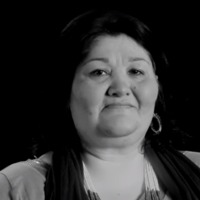
Jeri
Sex trafficking is a form of modern slavery that exists throughout the United States. Traffickers use violence, threats, lies, debt bondage and other forms of coercion to compel adults and children to engage in commercial sex acts against their will. The situations that sex trafficking victims face vary, many victims become romantically involved with someone who then forces them into prostitution. Others are lured with false promises of a job, and some are forced to sell sex by members of their own families. Victims of sex trafficking include both foreign nationals and US citizens, with women making up the majority of those trafficked for the purposes of commercial sexual exploitation. In 2015, the most reported venues/industries for sex trafficking included commercial-front brothels, hotel/motel-based trafficking, online advertisements with unknown locations, residential brothels, and street-based sex trafficking. Jeri Williams left an abusive marriage and moved to Portland where she thought he would have a better life. However, she was jumped by a gang and forced to work on the streets as a prostitute. Jeri was finally able to escape with the help of West Women’s Shelter and talks about the help she received from fellow survivors.

Eka
There are a reported 9,200 enslaved in Singapore with the large number of foreign workers being the most vulnerable to human trafficking and enslavement. Many are brought to the country after being deceived by recruiters in their home countries with the promise of employment only to become victims of debt bondage, forced labour and commercial sexual exploitation. Eka was looking for work after the breakdown of her marriage when a woman gave her an opportunity for a better life. Eka was sent to a training camp with over a hundred other women. Subjected to inhumane living conditions she found herself incurring debt that had never been agreed upon for her accommodation. One morning she was taken to the agency and told she would be working as a domestic worker. She was taken to a home in Yishun where she was forced to work long hours and received daily physical abuse.